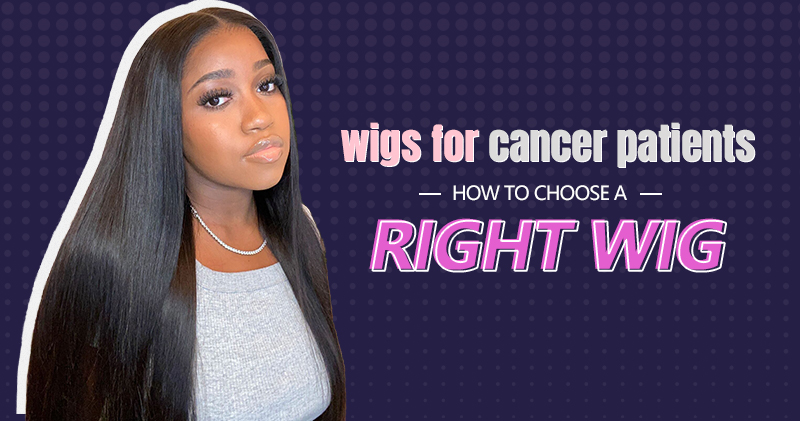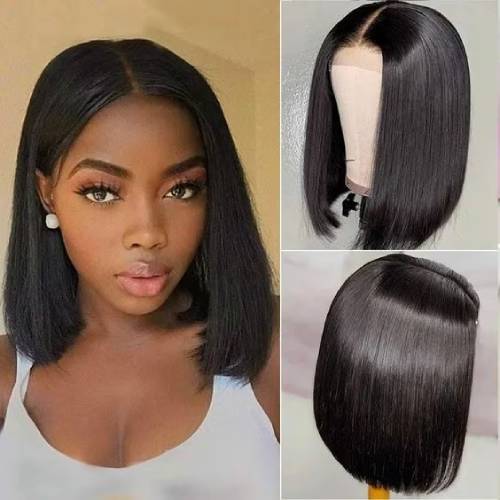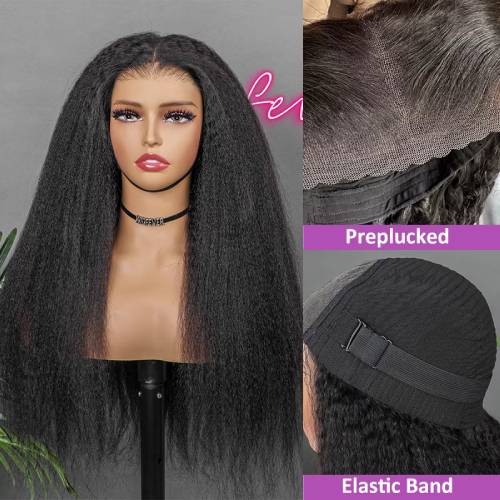Wigs For Cancer Patients-How To Choose a Right Wig
Last updated Nov.07,2023
For cancer patients, hair loss is a normal occurrence, not an exception. If you realize that hair loss makes you feel uncomfortable, or if you are considering addressing this discomfort by wearing a wig. You’ve come to the right place. In today blog post, we will help you learn about how to choose a right chemo wig.

How To Choose a Right Wig For Cancer Patients?
There are many kinds of wigs in the wig market, they come in different materials and types. For cancer patients, they also have a lot of choice. Radiation and chemotherapy can irritate the skin and cause dryness, making the scalp more sensitive. But radiation and chemotherapy can irritate the scalp and cause dryness, making the scalp more sensitive. Not all wigs are suitable for cancer patients. Continue reading to get information on how to choose the right wig.
Chemo Wigs Vs. Fashion Wigs
While it may sound let you down, unlike fashion wigs, when it comes to chemo wigs, comfort is more important than fashion, and style should not be overly emphasized.
Chemo wigs's main purpose is to provide comfort, confidence, and a natural appearance to those facing the challenges of hair loss due to medical conditions.
Fashion wigs are intended for everyday wear by individuals who want to change their hairstyle, color, or look for fashion, personal preference, or style experimentation.
Nevertheless, wig manufacturers are continually improving their wig production techniques, enhancing the quality of wigs. Fashion wigs designed for daily wear not only allow you to embrace fashion and various styles but also prioritize comfort.
Key Features And Considerations Of Chemo Wigs
Comfort
The comfort of a wig depends on various factors, such as breathability and lightweight design. Cancer patients often have sensitive scalps, so it's important to choose wigs with good ventilation to prevent further scalp sensitivity. A lightweight wig can also reduce the burden on the head when wearing it.
Secure Fit
During the process of hair loss, your head circumference may change, so it's best to choose a wig with an adjustable elastic band inner the wig cap that allows you to have the flexibility to adjust the wig's tightness, making it looser or tighter. What’s more, only a fitted wig cap can ensure a snug wig, providing natural look.
Confidence
Since chemotherapy has already brought physical distress, why not choose a wig that pleases you and boosts your confidence? During this challenging time, choosing a wig that conform to your current style or your dreaming style can help you feel more like yourself. The confidence a right wig brings plays a crucial role in the emotional well-being of cancer patients. Is there anything more important than the emotional well-being of cancer patients?
A Natural Appearance
What help achieve a a natural appearance when putting on a wig? A wig with a texture and color similar to your own hair. Choose a wig with a natural-looking hairline to avoid an obvious wig appearance.
Wig Cap
If you want natural hairline and more parting space, options, consider purchase a lace front wig; however, if what you care about is the ease of wearing, wear go wig is your answer.
Types Of Wigs For Cancer Patients
There are two types of materials used to make wigs: human hair and synthetic fibers.
A.Synthetic Wigs
Advantages and disadvantages
Synthetic wigs are generally more budget-friendly than human hair wigs, making them accessible to a wide range of patients. While synthetic wigs have come a long way in terms of looking natural, they may still not replicate the exact appearance and feel of human hair. And they are less comfortable than a human hair wig when wearing.
B.Human Hair Wigs
Advantages and disadvantages
Human hair wigs offer the most natural look and feel. They are virtually indistinguishable from natural hair. They tend to be more breathable and comfortable to wear for extended periods, and they are durable and can last a long time with proper care. However, they are generally more expensive and may need more maintenance just like your own hair.
Other Options For Covering Your Head, Besides Wigs.
If you are undergoing chemotherapy, wearing a wig is not the only solution, but it can boost your confidence. However, comfort is more important, isn't it? I must admit that, compared to wearing a wig, other options may be more comfortable for your scalp.
For cancer patients, soft scarves and headwraps both are popular choices. In the market, they have various styles, colors, and fabrics. You can tie them in different ways and match your outfit with different scarves and headwraps.
Don’t forget a variety of hats and caps are available in the market for cancer patient, from baseball caps to fashionable wide-brimmed hats. They can provide sun protection and are a practical option for outdoor activities. Importantly, some are designed specifically for cancer patients and offer not only comfort but style.
Not all chemotherapy patients experience hair loss; some may just experience thinning hair. For those who still have some hair, hair bundles and extensions can add volume and coverage to thinning areas. They are often clipped or secured in place.
Of course, it's also entirely acceptable to go without head coverings if you feel comfortable doing so. There still have some individuals choose to embrace their baldness during and after chemotherapy treatment.
Final Words
Hair loss typically occurs gradually, not all at once. More importantly, hair loss is often temporary, and your hair usually starts to regrow in the weeks or months following the end of chemotherapy. So, be optimistic, give your hair some time, and wait for it to grow back. The important thing is not whether you wear a wig or not, but the boost it can give to your confidence.
4x4 Lace Closure Human Hair Bob Wigs

Wear & Go Kinky Straight Lace Closure Wig

4C Hairline 13x4 HD Lace Front Water Wave Human Hair Wigs




 ×
×
